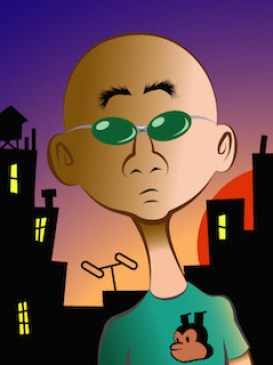Toon Musings: Sexytime with Turtles

Their eyes met…
Why is it always the lady sea creature who falls for the shipwrecked man and renounces her species to become human?
The Red Turtle is a new film by dutch animator Michaël Dudok de Wit, in a French/Japanese collaboration partially underwritten by Hayao Myazaki’s Studio Ghibli. It is a retelling of the myth wherein a sea creature glimpses a man, falls in love with him and becomes human in order to make a life with him. Legends of such human/ocean dweller frissons are common; think of the rusalkas of the Slavic countries, the sirens and naiads of Greek lore, or the Irish and Scottish selkies, and the various tales of mermaids from Arabia, China, Indochina, and Scandinavia. The aquatic fauna in this case is a giant sea tortoise. The film tells the story mostly from the point of view of the man, a survivor of an unknown disaster who is washed up on the beach of an isolated, but verdant tropical island. A number of attempts to escape the island are thwarted when a mysterious force smashes each successively larger raft to flinders. The culprit appears to be a large red sea turtle which the castaway, in his frustration, attempts to murder. He has a change of heart, the turtle transforms into a comely woman, and the newly minted couple proceed to make a life for themselves on the island.
The plot doesn’t really describe the experience this film conveys. Much onscreen time is devoted to depicting the day-today life on the island as the people struggle to provide for themselves, and to small, inconsequential moments, or ma in Japanese: the antics of a gaggle of sand crabs, the moon rising over the ocean, a rain shower in a bamboo forest. These moments do nothing to advance the plot per se, but serve to put the viewer in a contemplative mood, much like in Japanese manga where a panel of a bug crawling on a leaf or a breeze blowing through a wheat field would encourage a reader to take a beat, relax, and reflect. I must admit I got downright wistful… nay, philosophical.
The animation is simply lovely. The human characters are rendered simply, much like the characters from the great European cartoonist Hergé’s Tintin, or from one of Jean “Moebius” Giraud’s less frenetic works. Consequently, they appear rather flat in contrast to the backgrounds, which are lush and detailed; I believe they drew every single leaf and blade of grass. The colors are muted, except for the red of the turtle, which really makes her pop. Everything, it is told, was hand animated except for the turtle and the rafts, which were animated by computer, but the contrast is negligible.
It all combines to make a touching tale which I recommend highly. Still, I repeat my initial question: why is it so often the woman who casts off her identity to chase the man? For that matter, why is it the sea-dweller who becomes besotted with the human? Would the reverse too closely suggest… umm… bestiality?
 Wait, I just thought of a film that reverses both, and from prudish, sexist 1964, no less: the Don Knotts classic The Incredible Mr. Limpet. And there’s your double bill! You’re welcome.
Wait, I just thought of a film that reverses both, and from prudish, sexist 1964, no less: the Don Knotts classic The Incredible Mr. Limpet. And there’s your double bill! You’re welcome.
The exception that proves the rule
 Phil Maish is a freelance cartoonist of no repute. His modest efforts may be viewed at myth-fits.com. He has worked for the Government, the Press, the Opera, and a Soulless Corporation. Self-taught and beholden only to his formidable wife and amazing son, he spends his free time gadding about in his vintage autogyro and, with his faithful manservant Nicopol, exploring untrammeled wildernesses, discovering hitherto unknown animal species, smashing spy rings, and regaling fellow members of the League of Intrepid Adventurers with tales of his intrepid adventures.
Phil Maish is a freelance cartoonist of no repute. His modest efforts may be viewed at myth-fits.com. He has worked for the Government, the Press, the Opera, and a Soulless Corporation. Self-taught and beholden only to his formidable wife and amazing son, he spends his free time gadding about in his vintage autogyro and, with his faithful manservant Nicopol, exploring untrammeled wildernesses, discovering hitherto unknown animal species, smashing spy rings, and regaling fellow members of the League of Intrepid Adventurers with tales of his intrepid adventures.





Leave a Reply